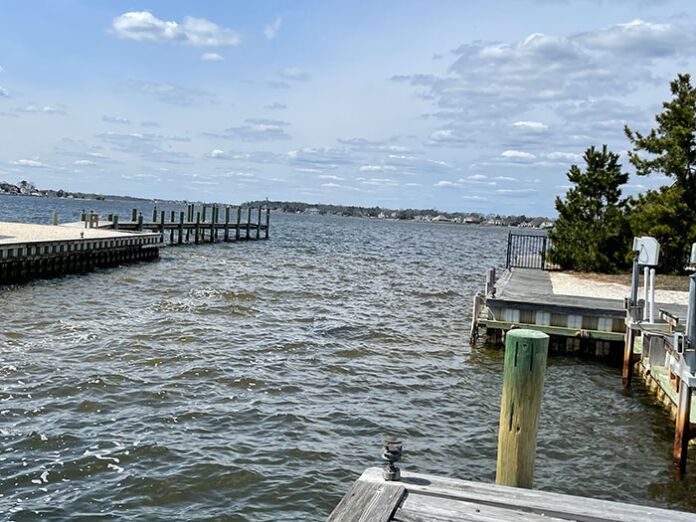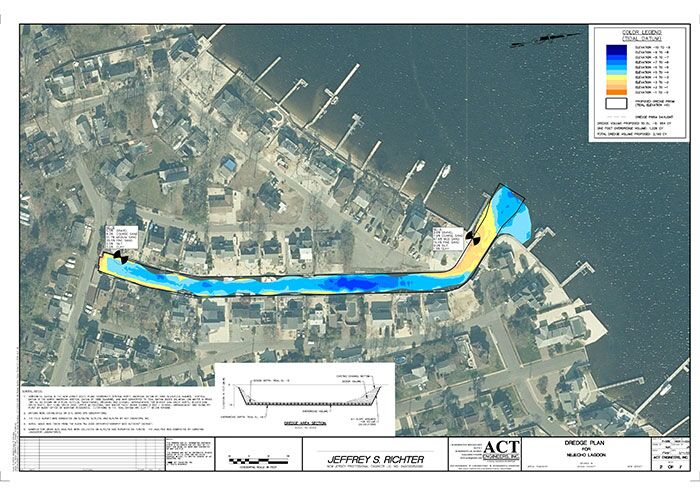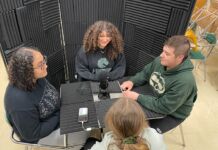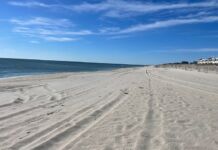
BRICK – Nejecho Beach resident John O’Donnell said that the 50’ x 100’ entrance to the lagoon behind his house has become unnavigable and dangerous because of a sandbar that has formed there.
“It’s gotten worse over the years, and it got much worse after Sandy,” he said in a recent phone interview. “I can only get my boat in and out for two hours before high tide and two hours after high tide.”
The engine on O’Donnell’s 26’ boat had to be repaired after it sucked in sand and overheated. The same thing happened to several of his neighbors, he said.
For years, residents have been asking the township for help with dredging, and relief is finally on the way since homeowners on the Nejecho Beach Lagoon are the first group to take advantage of a township-wide dredge permit that can be used by waterfront property owners to dredge without having to pay for costly permits from the NJ Department of Environmental Protection (NJDEP) and the Army Corps of Engineers (ACE).
The process of getting the township-wide dredge permit took years because of the enormity of the application, said Township Business Administrator Joanne Bergin. This is only the second such permit granted in the state, she added.
The township hired ACT engineers to survey the entire waterfront area, including 20-plus marinas, where they mapped the water depths at mean low water with color-coding, making it easier to understand. The township-wide permit application was submitted in April 2021.
The administration hired the firm to survey, conduct initial sediment sampling and perform the necessary engineering. Brick also paid the $30,000 permit application fee.
The township would be listed as the applicant on the township-wide permit application, and will ensure that each contract is publicly bid, bonded and awarded to a contractor required to pay a prevailing wage.
If a waterfront property owner, marina owner or an association wants to dredge, they must come to the township and apply for a permit. The township would assign an inspector to make sure that the dredging meets the terms and conditions of the township’s permit since the township would get fined if the contractor isn’t doing what they’re supposed to be doing.
The township is considering initial dredge projects for five of the shallowest problem areas, and will dredge the public and private portions so the work is completed uniformly.
Besides the Nejecho Beach Lagoon, the remaining problem areas include the south branch of the Beaver Dam Creek, Long Pond Lagoon, Superior Lagoon, and Boat Harbor Lagoon (an unnamed lagoon behind Channel Drive).

Since the township cannot pay for improvements on private property, residents will be assessed for the private portions of the dredge.
Dredging restrictions for winter flounder protection are in place every year from January 1 until May 31, which limits the window available for dredging, so the Nejecho Beach Lagoon project is slated to begin on June 1.
According to Township Engineer Elissa Commins, there is approximately 2,200 cubic yards of material in the Nejecho Beach Lagoon that is eligible for dredging. About 950 cubic yards is located at the mouth of the lagoon, and approximately 1,250 cubic yards is located along the remainder of its length.
The dredge spoils are over 90 percent sand, so it qualifies for beach replenishment under NJDEP and ACE guidelines, and will be used to replenish the beach at Windward Beach Park, said Commins.
“It is always a better alternative to put dredge materials to beneficial reuse as opposed to disposing of it as waste,” she wrote in a recent email.
“Windward was chosen because it is a municipal location with enough surface area to accommodate over 2,200 additional cubic yards of sand,” Commins said.
The beach area of Windward Beach Park is over 74,000 square feet, so when the dredged sand is spread uniformly there, it would only be less than a half-inch change in elevation, the engineer said.
“In reality, the material will be placed in a thicker layer by the water with almost no additional material being placed by the promenade walkway,” Commins said.
As part of the contract, the existing sand at Windward Beach will be scraped off, stockpiled and spread back over the dredged sand material, so at the end of the project, the appearance of the beach should be comparable to how it looks today, she said.






